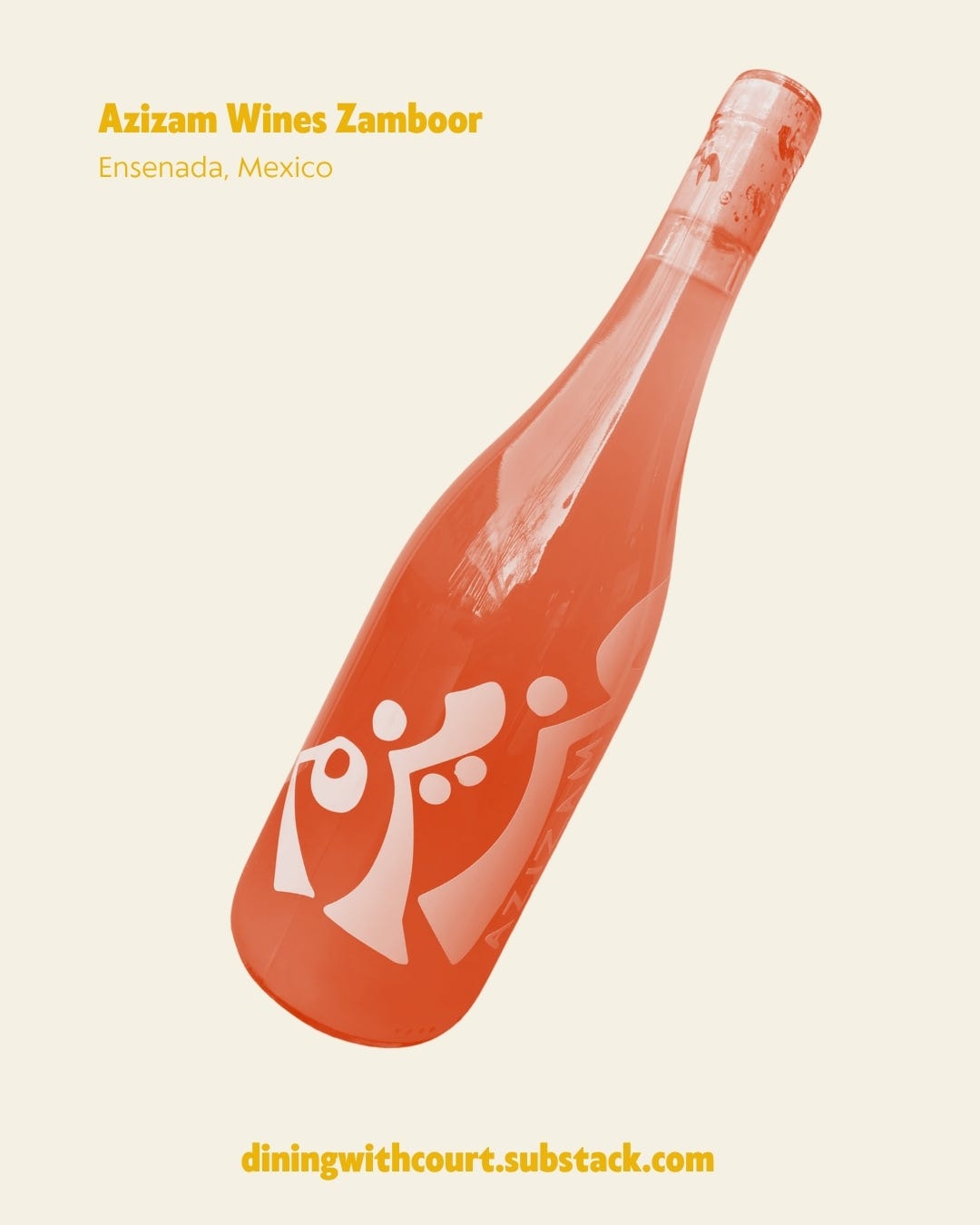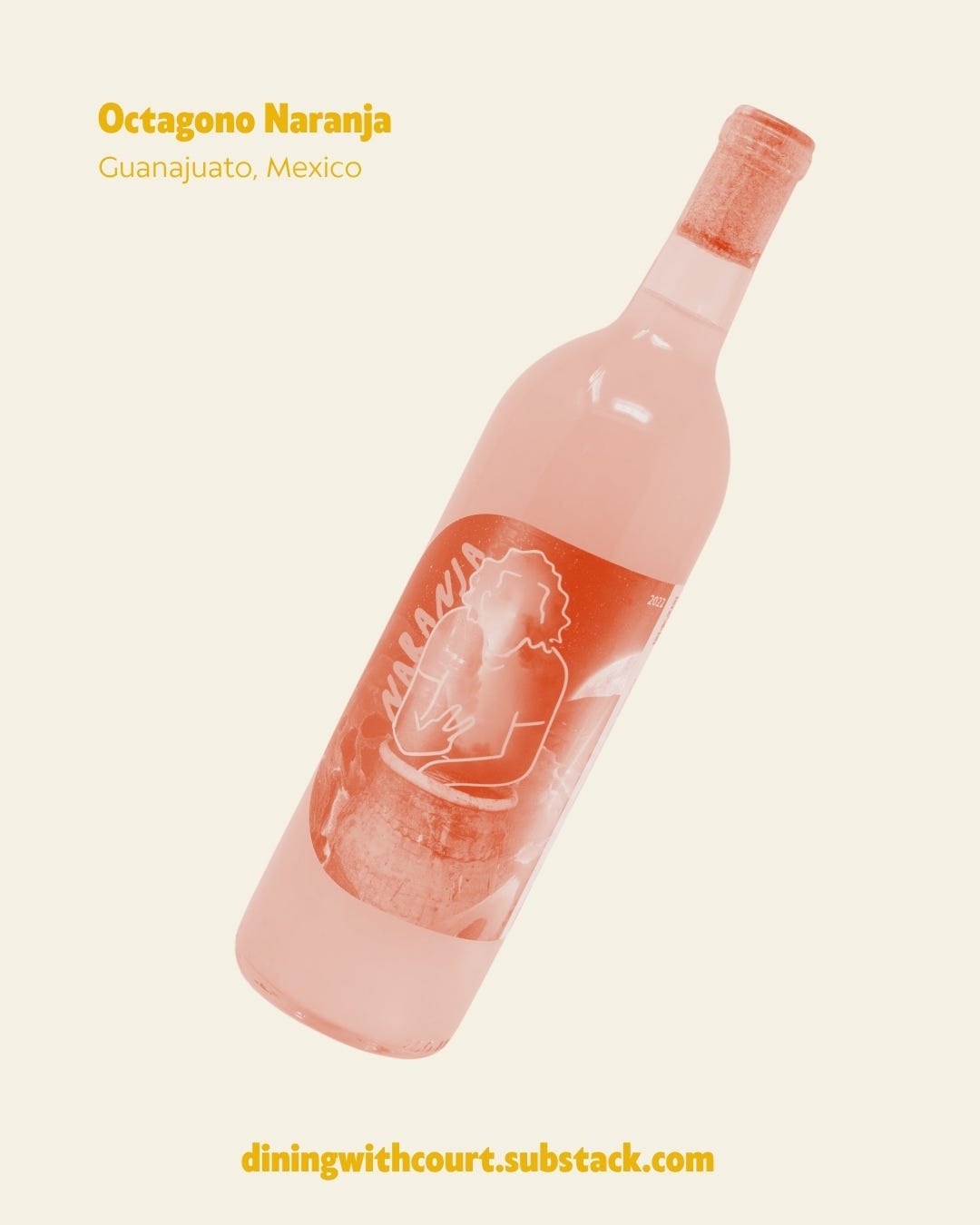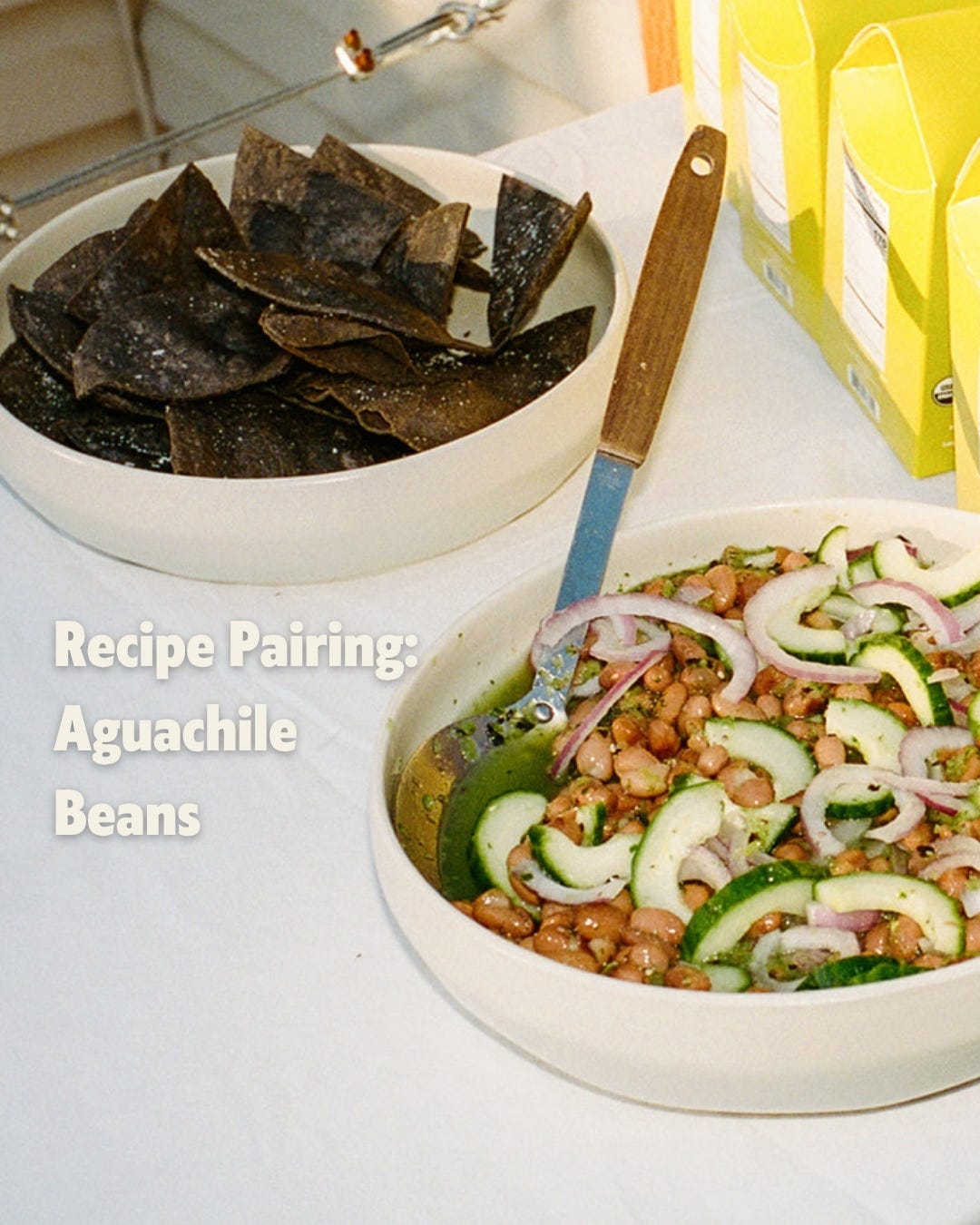As you’re reading this, I’m currently enroute to France for my chef residency. (big eek!) But I still wanted to deliver a wine club for this month— so here I am.. proud to say it made it to your inboxes. This month, in peek summer vibes, I wanted to bring you easy drinking and delish when chilled wines for those heat waves we’re all getting hit with. It then felt like a great time to focus on wines from Mexico. Their whites that are boldly tropical and juicy stone fruit amber wines grown in the valleys, to areas with more altitude bringing whites that have summer perfect crispy acidity and zestier profile.
But, before we continue any further, and because the wine industry benefits from the labor of migrant works—for anyone who signs up for paid subscriptions today/on this post, 100% of the profits will go to Border Angels— a non-profit organization that advocates for human rights, humane immigration reform, and social justice. Mission is to attempt to reduce the number of fatalities along the US-Mexico border by educating and assisting the communities on both sides of the border. Services include educational programs, Water Drops in the desert, Day Laborer Outreach, Familias Reunidas Immigration Bond Fund program, and Shelter Aid support in Tijuana to aid migrants and asylum seekers in need.
If you don’t want to Subscribe to my work, but want to donate elsewhere here are some recs:
GoFundMe for Sotelo Family. Need aid in expenses after Moises Sotelo was detained by ICE on his way to work at his vineyard management business, Novo Start Vineyard Service, in Newberg, Oregon.
National Day Laborer Organizing Network NDLON
I also recommend giving these a read:
California’s wine communities face deeply human costs amid Trump’s immigration raids
- aka Mas Vino Please, IG post: The US’ modern wine industry was built by Latinos & migrant workers.
Vena Cava Crystal Ship Pet Nat
100% Merlot | Valle de Guadalupe, Baja California, Mexico
Vena Cava is a boutique winery founded in 2005 by Phil and Eileen Gregory. Though they didn’t start out making “natural” aka low intervention wine, since moving more in that direction they are among the standouts of wineries in Mexico that are making exceptional wines in a “natural” style. This wine is made from 100% Merlot using the ancient method known in French as pétillant naturel. In this traditional style, the juice is bottled before fermentation is complete, allowing the naturally occurring carbon dioxide to become trapped in the bottle, resulting in a lightly sparkling wine.
If you’re not a Merlot drinker, this is 1000% going to change your mind. It’s unlike any other. Bright and buoyant, this wine balances elegant layers of fruit and a silky mouthfeel with a playful pop of acidity and delicate bubbles—it’s both graceful and full of good energy.
Azizam Wines Zamboor
85% Mission, 15% Grenache Blanc | Ensenada, Mexico
Maryam Hariri was once a climate-change policymaker before becoming winemaker. Her past work as steeped into her winemaking, giving her a heartfilled and climate-conscious expression of winemaking. Maryam blends her Persian roots with time-honored techniques: hand-destemming, wild fermentation, and aging in old-school vessels like tinajas and lagars. The reward is wines that are bursting with personality and soulful. This wine highlights uniquely Mexican grape varietals sourced from small-scale, sustainable farms in Valle de la Grulla and San Vicente. Zamboor means “bee” in Farsi. Named to honor the bees that swarmed them during the making of this wine.
Like a sun-soaked afternoon in a wild garden, it’s bright and juicy… ripe strawberries, zesty orange peel, and a hint of wild garden floor herbs. Lively acidity and a breezy, refreshing texture make it feel like summer in a glass.
Octagono Naranja
80% Moscatel, 20% Semillon | Guanajuato, Mexico
Octagono is something special. Marcelo Castro Vera’s winery doesn’t have electricity so the whole winemaking process is done by hand. Insane. If you remember my talk of qvevri wines in my Georgian Wine Highlight , Marcelo is heavily inspired by Georgian wine making, and also ferments his wine in clay vessels buried in the ground.
This wine puts you’re onto a sun-drenched balcony overlooking the ocean, somewhere warm and wild—think coastal Portugal or Mazatlán. The air is heavy with the scent of ripe fruit and sea breeze. It’s bright, juicy, and just a little wild. The wine tastes like ripe guava and pineapple, kissed by salt air and just beginning to ferment. It’s refreshing, a little unpredictable.
Vinos Pijoan 'Arbol de Fuego'
Zinfandel, Grenache, Colombard | Valle de Guadalupe, Baja California, Mexico
Silvana Pijoan, is the second-generation winemaker of Vinos Pijoan. Practicing organic farming and cultivating a micro-ecosystem where the vines grow alongside native Baja California flora, like wild sage and cacti. Since 2002, their family business has been characterized by its quality and by being a pioneer in the emerging Mexican wine scene.
This is somewhere in between a dark rose and a light red. This wine feels like a wild morning by the ocean—bright, punchy, and full of energy. Think salty Pacific breeze in your hair, a cinnamon-dusted peach pastry in hand, and a splash of tart limeade to zing your senses. It’s got a fun twist of juicy berries and just the right edge to keep things interesting for a light red. Bold, zesty, and well.. fuego.
Recipe Pairing: Aguachile Beans
Ingredients
2 medium tomatillos, husked, rinsed, and quartered
4 serrano chiles, stemmed and chopped
1 garlic clove
¼ cup fresh cilantro leaves and tender stems
1 tsp kosher salt
1 nori/seaweed sheet
½ cup ice water (see note)
2 cups cooked beans of choice (I love Primary Beans, Rancho Gordo, Heyday)
¾ cup fresh lime juice (about 6 limes)
½ English cucumber, or 1 small Persian cucumber, thinly sliced
½ red onion, thinly sliced
½ ripe avocado, peeled, seeded, and thinly sliced
Tostadas or tortilla chips, for serving
Note: Blenders radiate heat as they run, which makes any herb turn dark quickly. The ice water helps keep the ingredients cool, resulting in a bright green salsa.
Steps
In a blender or food processor, add tomatillos, serranos, garlic, cilantro, salt, nori sheet, lime zest, lime juice, and ½ cup ice water, and blend on lowest setting until smooth. Blending any higher than medium will give your salsa a smoothie-like texture, which you want to avoid.
To a bowl, add your salsa mixture and cooked beans. Give it all a stir and taste to see if it needs another pinch of salt. I prefer to let this sit for at least a half hour to let the beans really soak in the flavor of the salsa, but of course you can serve right away.
Place beans and salsa into a serving bowl. Then add the cucumber, red onion, and avocado. Give the veggies a little pinch of salt to season them.
Serve with tortilla chips, or spoon onto tostadas.









